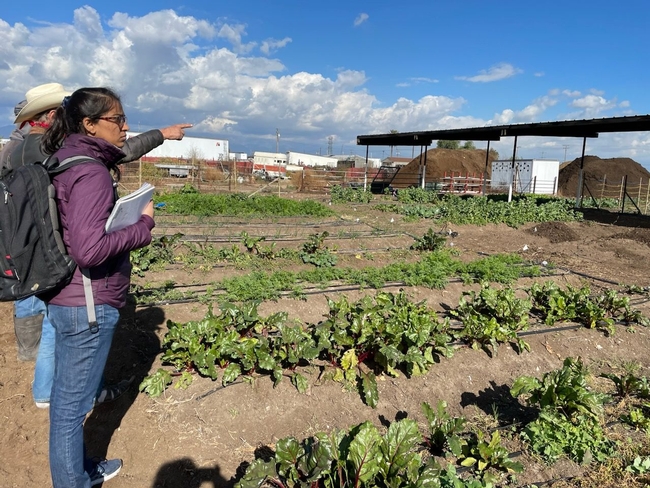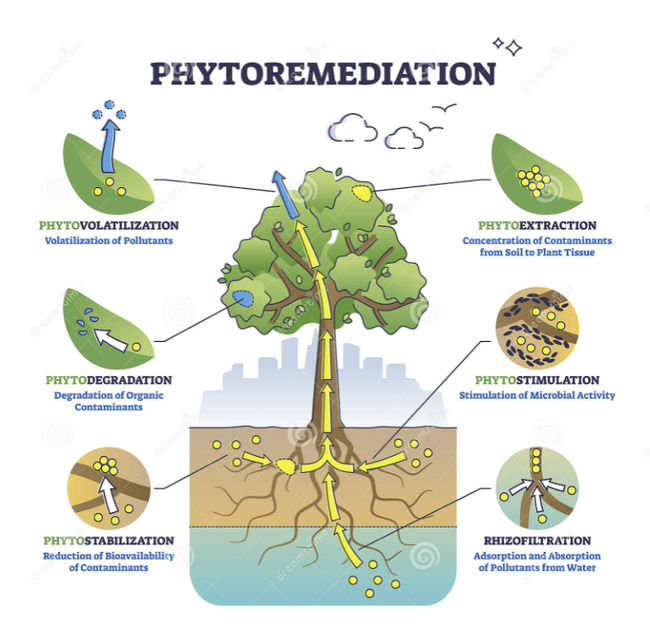- Author: Amrita Mukherjee
- Author: Esther N Lofton
- Author: Grant Edward Johnson
- Author: Billy Locke
What is Soil Toxicity?
Soil toxicity occurs when harmful substances like heavy metals, pesticides, and other pollutants are present in the soil at levels that can harm living organisms. Soil contamination, a significant environmental concern, often arises in densely populated metropolitan areas where contaminants accumulate, posing risks to ecosystems and human health. These pollutants can originate from industrial activities, agricultural practices (manure, fertilizer and pesticides), and improper waste disposal. Common contaminants found in urban soils include pesticides, petroleum products, radon, asbestos, lead, chromated copper arsenate, and creosote.
Types of soil toxicity
Heavy Metals Toxicity and Some Considerations
Heavy metals in soil can disrupt critical biological processes in plants, causing stunted growth, lower yields, and nutrient deficiencies. Due to their persistence and high toxicity, these metals are among the most prevalent pollutants in contaminated soils.
The most common metal pollutants in soils today include:
- Arsenic (As)
- Cadmium (Cd)
- Chromium (Cr)
- Mercury (Hg)
- Lead (Pb)
- Copper (Cu)
- Zinc (Zn)
- Nickel (Ni)
Organic Contaminant Toxicity:
- Polychlorinated Biphenyls (PCBs): Used in electrical equipment and industrial processes.
- Polycyclic Aromatic Hydrocarbons (PAHs): Formed during the incomplete combustion of organic materials.
- Pesticides: These include various chemicals, such as imidacloprid, dieldrin, and atrazine.
Salinity and Sodicity:
- Saline Soils: Result from the accumulation of soluble salts, often due to irrigation with poor-quality water.
- Sodic Soils: Characterized by high sodium levels, which can degrade soil structure and reduce permeability.
Asbestos Contamination:
- Asbestos Fibers: Released from construction and demolition activities, posing health risks when inhaled.
Farm Site Selection
When selecting a site, it is essential to familiarize yourself with its location and history. Ask yourself if your site is near Industrial and manufacturing sites, landfills, junkyards, waste disposal sites, highway corridors, parking lots, areas of heavy traffic, household sites, and former farmlands with build-up of contaminants.
Effects of Soil Toxicity
- Plants
- Reduces biomass and root length, inhibits seed germination, and reduces stem conductivity
- DNA damage, decreased chlorophyll content, decreased protein continent, and cause stunted foliage
- Root deformation, curb shoot length, reduce phyto-peptides
- Reduced seed germination and plant growth.
- Disrupts nutrient consumption and metabolism.
- Accumulation of heavy metals in plants makes them unfit for human and wildlife consumption.
- Human and animal health
- Consumption of contaminated crops can lead to heavy metal poisoning.
- Inhalation of dust particles from contaminated soil may cause respiratory problems.
- Long-term exposure can result in chronic health conditions such as cancer, Alzheimer's, other neurological disorders, and developmental abnormalities in children.
- Soil Microorganisms
- Soil toxicity can reduce biodiversity by harming beneficial soil organisms, such as bacteria, fungi, and earthworms, reducing soil biodiversity.
- Toxic substances can disrupt essential soil functions, such as nutrient cycling and organic matter decomposition.
- Effects of Soil Toxicity on Water Quality
- Contaminants can leach into groundwater or run off into surface water bodies, affecting water quality and aquatic ecosystems.
- Excessive nutrients from fertilizers can lead to eutrophication, causing algal blooms and oxygen depletion in water bodies.
Mitigation Strategies
1. Soil Testing
Regular soil testing is crucial for detecting and monitoring soil toxicity levels. For more information and personal use, visit these soil testing lab resources. Laboratory analysis of soil samples can identify the concentration of heavy metals and other contaminants. This information is essential for assessing the extent of contamination, allowing master gardeners to implement effective soil stabilization strategies with support from university researchers, extension services, and other resource groups.
2. Soil Remediation- Phytoremediation
Phytoremediation involves using plants to remove toxins from the soil, offering a sustainable and cost-effective soil remediation solution. Certain plant species can absorb heavy metals and pesticides from the soil (Alengebawy et al. 2022). For example, Sunflowers (Helianthus annuus) have been used to remove heavy metals such as lead and cadmium from contaminated soils (Vangronsveld et al., 2009).
Other plant species for phytoremediation include;
- Rattlebush
- Chinese Brake Ferns
- Indian Mustard
- Perennial Ryegrass
- Black Nightshade
- Common Cocklebur
- Alpine Pennygrass
Image via Total Life Cycle Solution
These plants have the ability to absorb heavy metals and pesticides from the soil into their fibers. Afterward plants can be harvested and disposed of properly, effectively cleaning the soil. Note: Do not use these plants for onsite composting until soil testing confirms that toxicity levels have been reduced to safe levels
3. Bioremediation
Involves the use of microorganisms to degrade or transform contaminants into less harmful forms. For example: The application of bacteria and fungi to degrade petroleum hydrocarbons in contaminated soils (Das & Chandran, 2011).
4. Soil Amendments
Materials such as biochar, compost, and lime can be added to immobilize contaminants and improve soil health. Biochar has been shown to reduce the bioavailability of heavy metals and enhance soil fertility (Beesley et al., 2011).
References and Resources:
Alengebawy, A., Abdelkhalek, S. T., Qureshi, S. R. & Wang, M. Q. (2022) Heavy metals and pesticides toxicity in agricultural soil and plants: Ecological risks and human health implications. Toxics 9(3), 42 . https://www.ncbi.nlm.nih.gov/pmc/articles/PMC7996329/
Beesley, L., Moreno-Jiménez, E., Gomez-Eyles, J. L., Harris, E., Robinson, B., & Sizmur, T. (2011). A review of biochars' potential role in the remediation, revegetation and restoration of contaminated soils. Environmental pollution (Barking, Essex : 1987), 159(12), 3269–3282. https://doi.org/10.1016/j.envpol.2011.07.023
Das, N., & Chandran, P. (2011). Microbial degradation of petroleum hydrocarbon contaminants: an overview. Biotechnology research international, 2011, 941810.
https://doi.org/10.4061/2011/941810
Vangronsveld J., Herzig R., Weyens N., Boulet J., Adriaensen K., Ruttens A., Thewys T., Vassilev A., Meers E., Nehnevajova E. (2009) Phytoremediation of contaminated soils and groundwater: Lessons from the field. Environ. Sci. Pollut. Res. 16:765–794.
https://pubmed.ncbi.nlm.nih.gov/19557448/
https://www.envirostor.dtsc.ca.gov/public/report_permitted_public
https://oehha.ca.gov/risk/chhsltable.
- Author: Esther N Lofton
- Author: Amrita Mukherjee
- Author: Grant Johnson
Our blog is a dedicated resource for anyone interested in the vibrant world of urban agriculture and water resources. Designed to inform, inspire, and empower our readers, here's what you can expect:
Research and Insights
-
Innovative Practices: Learn aboutcutting-edge research on hydroponics, aquaponics,high tunnel crop production for seasonal extension, vertical gardening, cover cropping, water management, and phytoremediation for sustainable urban farming techniques.
-
Case Studies: Explore successful urban food production projectse.g. soil health management practices, safe food production and postharvest handling from community gardens to rooftop farms and learn about the strategies that made them thrive.
-
Environmental Impact: Understand the ecological benefits of urban farming, including soil and water conservation, water quality, biodiversity enhancement, and carbon footprint reduction.
Practical Guides and Tips
-
How-To Articles: Step-by-step guides on starting your own urban garden,farm site selection, and designing, whetherit's a small balcony setup or a full-scale community project. Also, learn about implementing best management practices to protect water resources.
-
Plant Care: Expert advice on selecting, planting, biodegradable mulch useand maintaining drought-tolerant and native plants suited to SoCal's climate.
-
DIY Projects: Creative and practical DIY ideas for building your vertical gardens, compost systems, water quality best management practices and more.
Community and Extension
-
Local Events: Stay updated with local workshops, farmers' markets, garden tours, and educational events in the SoCal region.
-
Community Stories: Hear from urban farmers, community leaders, and gardening enthusiasts about their journeys, challenges, and successes.
-
Resources and Support: Access a wealth of resources, including links to local gardening groups, government and non-government grants/ funding for growers and extension services, and sustainability organizations.
Policy and Advocacy
-
Regulatory Updates: Keep informed about local policies, zoning laws, and incentives that impact urban farming in Southern California.
Conclusion
The SoCal Urban Food Production Blog is your go-to platform for all things related to sustainable urban farming in Southern California. Whether you're a seasoned gardener,traditional growers, a curious newcomer, or a community leader, our blog provides the knowledge, inspiration, and connections you need to cultivate a thriving urban food landscape.



